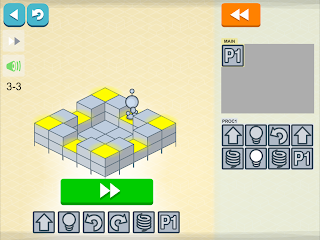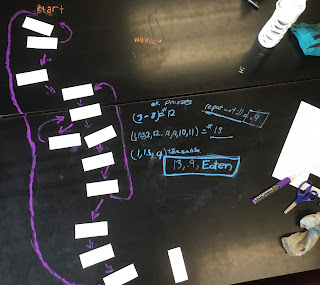Students started by working through the free app Light Bot: Code Hour. As they progressed through the levels, they learned about loops, if-then statements, and procedures. My kids (who are 8th and 9th graders) loved this. We dedicated a whole 80 minute block to working through the app. There was great collaboration when students got stuck and cheers of success when the challenge was solved.
Then students moved onto understanding the process of translation and working on describing the process as if it were programming code.
When we did this in class, we discussed as a group what some of the commands would be and then they diagramed out the process of translation using those commands in loops and if-then statements as well as procedures that repeat multiple times. We printed out the basic commands, students cut them out and used chalk markers to create their "program" on the desks.
As a bonus, our technology teacher coordinated with me as she had students begin an animation project in Google Slides. Students had to create an animation of transcription or translation. She helped them with the technical issues of creating their animation and I helped them with the scientific accuracy. They were fabulous!







No comments:
Post a Comment